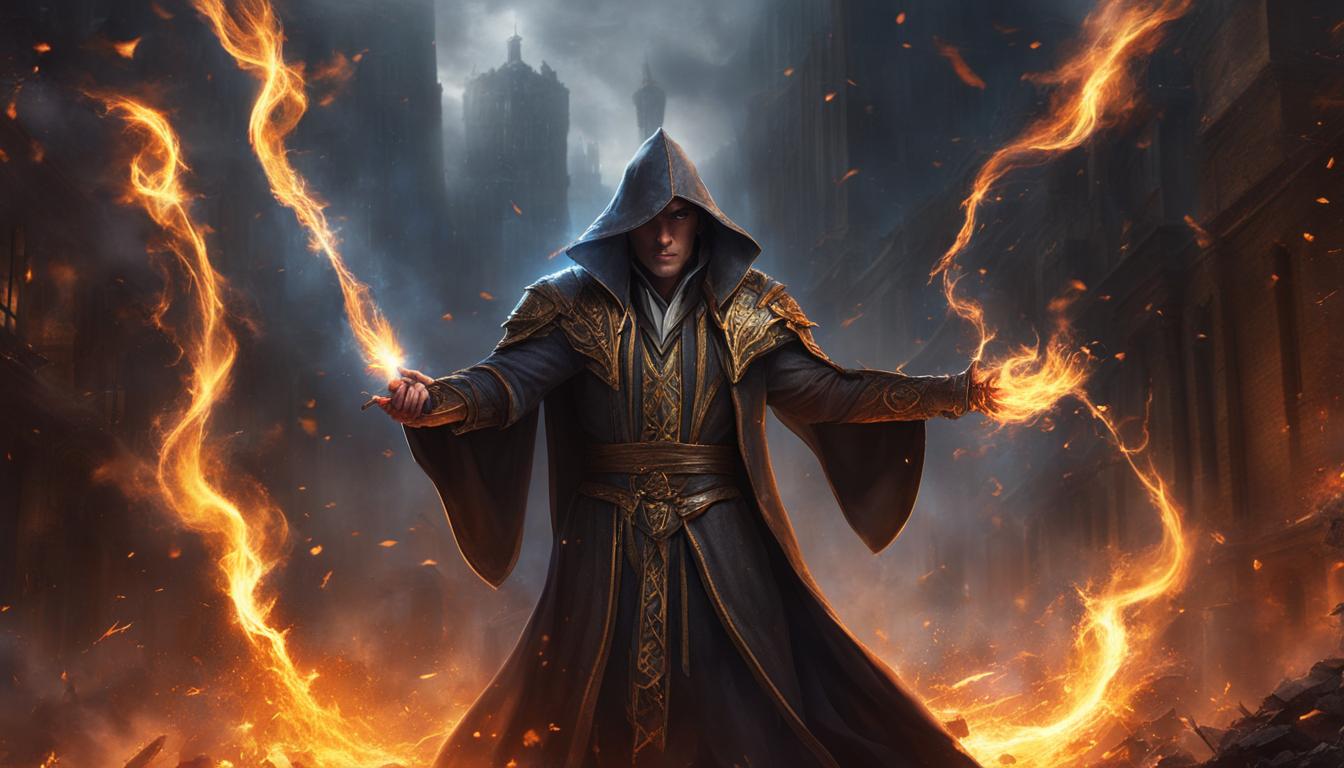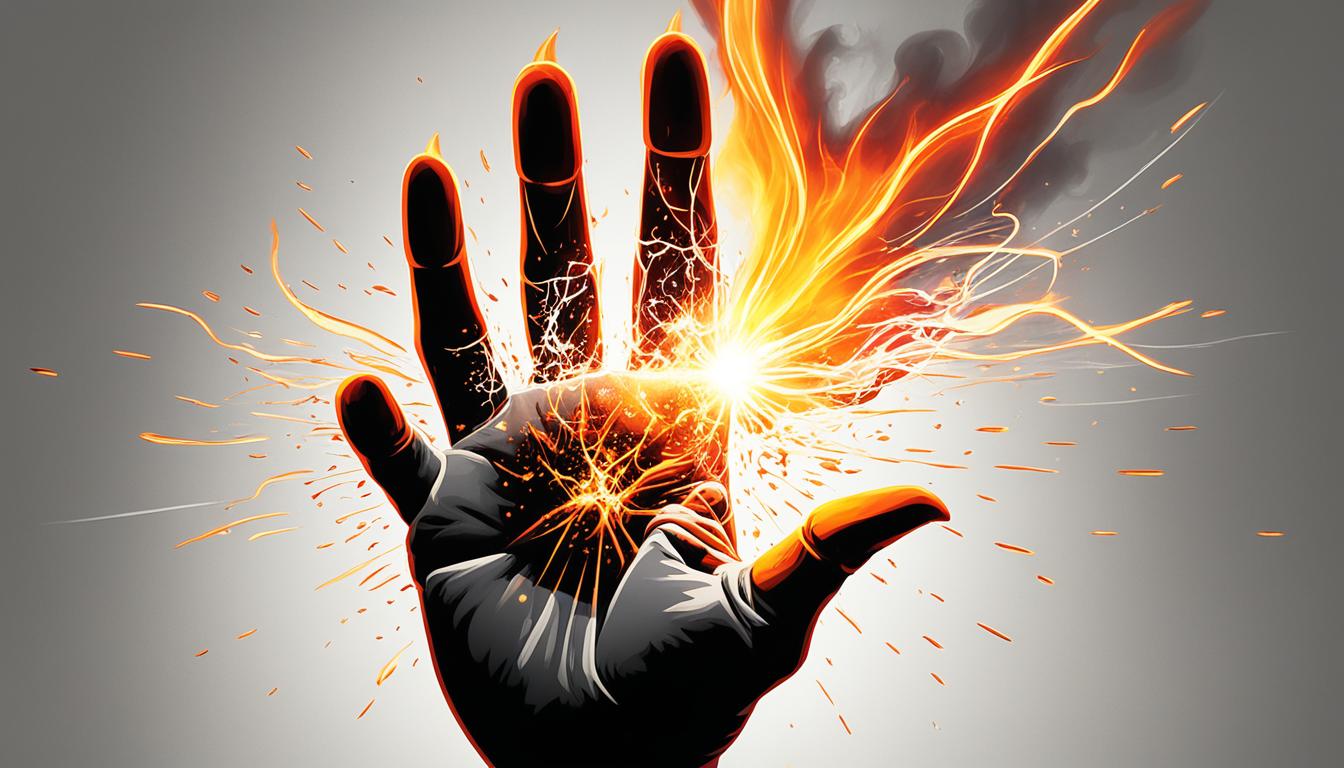Fire Bolt 5e: D&D Cantrip Guide
Hey there! Today, I want to talk about Fire Bolt, one of the most exciting cantrips in Dungeons and Dragons 5th Edition. If you’re a sorcerer or a wizard looking for a powerful offensive option, then Fire Bolt might just be the spell for you. Let’s dive in and explore the ins and outs of this fiery cantrip.
Fire Bolt is a cantrip that allows you to hurl a small ball of fire at a creature or object within range. It packs quite a punch, dealing 1d10 fire damage on a successful hit. As you level up, the damage scales, increasing to 2d10 at 5th level, 3d10 at 11th level, and a whopping 4d10 at 17th level. This makes Fire Bolt one of the most damaging cantrips in the game!
To cast Fire Bolt, you’ll need to make a ranged spell attack, using your spellcasting ability modifier and proficiency bonus. The spell has a range of 120 feet, giving you the freedom to strike your foes from a safe distance. However, remember that Fire Bolt requires verbal and somatic components, so don’t forget to speak the incantation and make the necessary hand gestures.

Key Takeaways:
- Fire Bolt is a cantrip that deals increasing fire damage as you level up, making it a powerful offensive option.
- It requires a ranged spell attack and has a range of 120 feet, giving you flexibility in combat.
- Fire Bolt has verbal and somatic components, so make sure to speak the incantation and perform the hand gestures.
- As a sorcerer or wizard, Fire Bolt can be your go-to cantrip for dealing consistent and impressive damage.
- Consider your character build and playstyle when choosing between Fire Bolt and other damaging cantrips.
Fire Bolt 5e Damage and Scaling
If you’re looking for a cantrip that packs a punch, Fire Bolt is the spell for you. With its fiery damage and scaling capabilities, it’s no wonder why sorcerers and wizards favor this powerful cantrip.
The base damage of Fire Bolt starts at 1d10 fire damage. However, as you level up, the damage increases significantly, making it one of the strongest damaging cantrips in the game. Take a look at the table below to see how the damage scales with your caster level:
| Caster Level | Damage |
|---|---|
| 1st - 4th | 1d10 |
| 5th - 10th | 2d10 |
| 11th - 16th | 3d10 |
| 17th+ | 4d10 |
As you can see, the damage increases at key milestones in your leveling progression. By the time you reach 17th level, Fire Bolt can deal a staggering 4d10 fire damage. This consistent high damage output makes Fire Bolt a reliable choice for obliterating enemies and dealing significant damage during combat encounters.

Fire Bolt: A Powerful Offensive Cantrip
Fire Bolt’s impressive damage potential and scaling capabilities make it an ideal choice for spellcasters who want to dominate the battlefield with fire. Its consistent high damage output allows you to decimate enemies and quickly turn the tide of battle in your favor.
Additionally, Fire Bolt’s long-range of 120 feet grants you the flexibility to engage enemies from a safe distance, minimizing the risk of close-quarters combat. This can be especially advantageous for spellcasters with lower hit points or those who prefer to keep their distance from potential threats.
Furthermore, Fire Bolt’s simplicity and widespread use among sorcerers and wizards make it a recognizable and easily accessible cantrip. Its straightforward mechanics and devastating impact make it an excellent choice for both novice and experienced spellcasters.
Fire Bolt 5e Range and Components
When it comes to the Fire Bolt cantrip in D&D 5th Edition, range and components play crucial roles in its effectiveness and versatility. Let’s take a closer look at these aspects.
Range
The Fire Bolt spell has an impressive range of 120 feet, allowing you to target creatures or objects within that distance. This extensive range gives you the advantage of striking targets from a safe distance, minimizing the risk of retaliation. Whether you’re engaging in combat or need to hit a specific mark from afar, Fire Bolt’s range ensures you won’t be limited in your choices.
Components
Like many D&D spells, Fire Bolt requires verbal and somatic components for casting. This means that in order to unleash the fiery projectile, you must speak an incantation and perform specific hand gestures.
The verbal component involves speaking a series of arcane words or phrases, channeling your magical energy into the spell. The somatic component requires precise hand movements, allowing you to shape and direct the fiery mote accurately.
These components are vital in focusing your energy and ensuring the targeted release of your Fire Bolt spell. By harnessing the power within and combining it with your physical movements, you can propel the destructive force of the fiery projectile with precision.

Fire Bolt 5e and Other Cantrips
When it comes to sorcerers and their choice of cantrips, Fire Bolt is often a top contender. With its high damage output and versatile usage, it is frequently selected as the primary damaging cantrip for sorcerer builds. However, it’s worth noting that there are other powerful options available for spellcasters, such as Eldritch Blast.
Eldritch Blast, commonly used by warlocks, possesses similar damage potential to Fire Bolt but offers different additional effects. The decision between Fire Bolt and other cantrips ultimately boils down to player preference and the specific build of the character.
| Cantrip | Damage | Additional Effects |
|---|---|---|
| Fire Bolt | 1d10 fire damage (increases with level) | N/A |
| Eldritch Blast | 1d10 force damage (increases with level) | Can hit multiple targets with certain invocations |
Ultimately, the choice between Fire Bolt and other cantrips depends on the playstyle and preferences of the player. Some spellcasters may prefer the simplicity and straightforward damage of Fire Bolt, while others may opt for the additional versatility and utility offered by alternate cantrips like Eldritch Blast.
Conclusion
Fire Bolt is a powerful cantrip in D&D 5th Edition, providing sorcerers and wizards with a versatile and potent offensive option. With its increasing damage dice at higher levels and a range of 120 feet, Fire Bolt offers reliable and consistent damage potential.
This cantrip is favored by many spellcasters for its simplicity and effectiveness in combat situations. Whether used as a straightforward damaging spell or as a tool for environmental manipulation, Fire Bolt enhances a character’s arsenal of spells.
With Fire Bolt, sorcerers and wizards can unleash a mote of fire at their foes, dealing high fire damage and igniting objects. Its range and damage dice make it a valuable asset in any spellcaster’s repertoire. So, when it comes to selecting cantrips, Fire Bolt is a top choice for those seeking power and versatility in D&D 5th Edition.
FAQ
What is Fire Bolt in D&D 5th Edition?
Fire Bolt is a cantrip that allows you to hurl a mote of fire at a creature or object within range.
How much damage does Fire Bolt do?
Fire Bolt starts at 1d10 fire damage and scales up as the caster levels up. At 5th level, the damage increases to 2d10, at 11th level it increases to 3d10, and at 17th level it reaches 4d10.
What is the range of Fire Bolt and what components are required for casting?
Fire Bolt has a range of 120 feet and requires verbal and somatic components.
What does the Fire Bolt spell do?
Fire Bolt is an evocation spell that allows the caster to hurl a small ball of fire at a target. On a hit, the target takes fire damage equal to the spell’s damage dice.
Is Fire Bolt a good choice for sorcerers?
Yes, Fire Bolt is a popular choice for sorcerers due to its high damage output and versatility.
How does Fire Bolt compare to other cantrips?
Fire Bolt is one of the most powerful damaging cantrips in the game, but other cantrips like Eldritch Blast can also be powerful options for spellcasters.